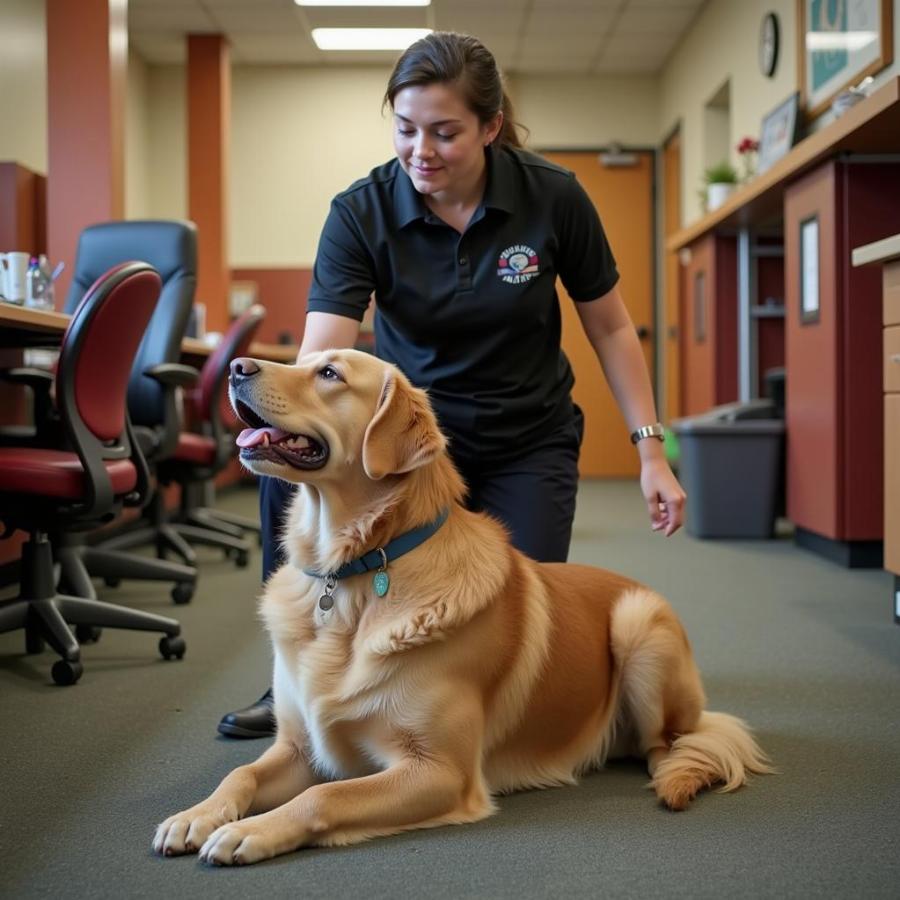The angriest dog. Is there really such a thing? We often hear stories of aggressive breeds, but what truly dictates canine aggression? Understanding the complexities behind canine behavior is crucial for responsible pet ownership. This article delves into the truth about “the angriest dog,” exploring the factors that influence aggression, dispelling common myths, and offering guidance on how to manage and prevent aggressive behaviors in dogs.
Is There Really an “Angriest Dog Breed”?
While some breeds have a reputation for being more aggressive, labeling a specific breed as “the angriest” is misleading. Aggression is a complex behavior influenced by genetics, environment, and training. Factors like early socialization, proper training, and consistent handling play a crucial role in shaping a dog’s temperament. A dog’s breed doesn’t define its disposition; rather, its experiences do.
Debunking the “Angry Breed” Myth
The notion of an inherently aggressive breed is a harmful generalization. It’s like assuming all members of a human family will behave identically. While genetics can predispose certain breeds to particular traits, individual dogs within those breeds can vary significantly. Focusing on nurture over nature allows us to appreciate the individuality of each dog.
Understanding the Roots of Canine Aggression
Aggression in dogs is rarely unprovoked. It’s usually a response to fear, pain, territorial instincts, or resource guarding. Identifying the underlying cause is critical to addressing the issue effectively.
What Triggers Aggression in Dogs?
Several factors can trigger aggressive behaviors in dogs, including:
- Fear: A frightened dog may lash out defensively.
- Pain: Injury or illness can make a dog irritable and aggressive.
- Territoriality: Dogs may display aggression to protect their perceived territory.
- Resource Guarding: Possession aggression can arise when a dog protects valued items.
- Lack of Socialization: Dogs not properly socialized may struggle to interact appropriately with other dogs or humans.
- Poor Training: Inconsistent or harsh training methods can contribute to aggression.
How can I tell if my dog is showing signs of aggression?
Aggressive behaviors can manifest in several ways, including growling, snarling, snapping, barking, lunging, and biting. It’s important to recognize these signs early and seek professional help.
Managing and Preventing Aggression
Addressing canine aggression requires a multifaceted approach involving training, behavior modification, and potentially veterinary intervention.
Effective Training Techniques
Positive reinforcement training is a cornerstone of managing and preventing aggression. Rewarding desired behaviors helps build trust and encourages positive interactions. Consistency and patience are key.
Seeking Professional Help
Consulting a certified professional dog trainer or veterinary behaviorist is crucial for dealing with aggression. They can assess the situation, develop a tailored training plan, and address underlying medical or behavioral issues.
The Importance of Early Socialization
Early socialization exposes puppies to a variety of people, animals, and environments, helping them develop into well-adjusted adults. This critical period during puppyhood lays the foundation for positive social interactions.  Huấn luyện chó không hung dữ
Huấn luyện chó không hung dữ
Conclusion
The concept of “the angriest dog” is a misconception. Understanding the complexities behind canine aggression is paramount for responsible pet ownership. By focusing on proper socialization, training, and addressing underlying causes, we can help dogs become well-adjusted and happy companions. Remember, every dog is an individual, and their behavior is a reflection of their experiences, not just their breed.
FAQ
- Are certain dog breeds inherently more aggressive? No, aggression is influenced by multiple factors, not solely breed.
- How can I socialize my puppy effectively? Expose them to various sights, sounds, people, and friendly dogs in a controlled and positive manner.
- What should I do if my dog shows signs of aggression? Consult a certified professional dog trainer or veterinary behaviorist immediately.
- Is punishment an effective way to address aggression? No, punishment can worsen aggression. Positive reinforcement is far more effective.
- Can aggression be cured? With proper training and behavior modification, aggression can often be managed and significantly reduced.
- What are some signs of fear-based aggression? Tucked tail, flattened ears, avoidance, and defensive posturing.
- How important is spaying/neutering for managing aggression? While it can sometimes help, it’s not a guaranteed solution and should be considered in conjunction with training and behavior modification.
Beaut Dogs: Your Guide to Canine Companionship
Beaut Dogs is your trusted resource for all things related to dog ownership. We offer comprehensive information and expert advice to help you navigate the joys and challenges of raising a happy and healthy canine companion. When you need support, contact us at Email: [email protected] to get detailed and accurate answers from Beaut Dogs.